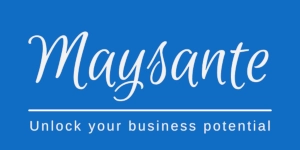There are more job vacancies in the UK now than there are unemployed people according to the figures released by the ONS in May 2022. The first time this has ever happened since records began. Employers in many sectors are struggling to recruit. They cannot fill their vacancies fast enough. Post Brexit Britain is facing skills shortages in many industries. These include the technology, hospitality, health and social care industries. As well as the transport and construction industries. The end of the free movement of labour between the UK and EU has also had an impact. As organisations are not able to attract talent and recruit as fast and easily from the European labour market. It is fair to say that Britain has always relied on immigrants to fill roles and to provide the skills the economy needs. These skills set often complement the local labour market.
The requirements for visa sponsorship stipulated by the Home Office, together with the associated cost make it difficult for some employers to sponsor prospective employees. This may limit their recruitment activities to the UK labour market. Thus, making it hard to find the right candidates.
The Impact of Covid-19 on Skills Shortages
The Covid-19 pandemic has also contributed to the skills shortages in certain sectors. Around 1 in 4 employees were furloughed during the pandemic. The downturn in certain industries such as hospitality meant that people lost their jobs and looked elsewhere for new roles. Some people, especially those in health and social care were overstretched during the pandemic. This led to burnout in some cases. People made the decision to leave their jobs.
Employers who did not rise to the challenge, in terms of taking good care of their employees, during the pandemic also saw employees leaving their organisations. Employees not satisfied with their jobs or happy with their employment are seriously considering leaving their jobs. The great resignation has become the new buzzword. Employers worry that in addition to not being able to recruit more staff, they may lose the ones they have.
Most employers started to look carefully at employee retention and well-being programmes. They started paying close attention to what else they can do to retain their best talent. Also, what other employers in the industry are doing. Employers started to engage more with their workforce to find out how best they can make their workplace a great environment for all.
Better Work-Life Balance
Additionally, employees are demanding a better work-life balance. Some employees are prepared to take a salary cut to achieve this. Employers are offering more hybrid and where possible, remote roles in the hope that they attract more candidates. Remote and hybrid working removes the barriers in recruitment due to location. Organisations, therefore, gain access to a wider pool of candidates. But the challenge for employers is also to ensure that organisational learning and knowledge sharing are preserved. This way, employees can learn from each other, effective cross-functional work or collaboration, and teams work cohesively. Organisations must find a way to make this work for them and to use it as a competitive advantage.

Finding the Right Skills
The biggest challenge employers face in recruitment is finding the right people with the right skill set for their vacancies. Although there are more vacancies than the unemployed, ONS reports that certain age groups are less likely to find employment. For example, those over the age of 50. In most cases, these candidates are deemed overqualified for roles or too expensive for the employer. This approach is leading to a high level of skills wastage as these people are likely to have years of experience under their belt. Equally, very inexperienced candidates are unlikely to be offered jobs as they do not have the skills needed to fill the job roles. Thus, a section of employable people is excluded from the talent pool.
Employers mostly desire new recruits who can hit the ground running. They have little time or room for handholding. This makes it difficult to take the approach of employing people who are trainable to fill some of these vacancies. Specialist skills which may require years of training become even harder to fill. In some cases, succession planning becomes difficult as employers may not be able to afford to employ a trainee or an apprentice to be an understudy.
Upskilling
Organisations may be able to develop the skills they need by upskilling their existing workforce. This can be achieved by enabling the workforce to learn new skills. Employers can sponsor employees to enrol on formal education to attain new knowledge. As a result, they can apply learnings to their work or in a new job role.
Seconding employees to different areas of the business gives them more exposure. It also provides a better understanding of the business. This will also make them more valuable to the business as they become more versatile.
Management and experienced employees often have heavy workloads. They may be troubleshooting or fire fighting all the time. This leaves little room to accommodate the training of new employees. Employees assigned to mentoring new employees may not have the necessary skills or experience to effectively mentor the new recruits. This may impact how fast they are able to pick up the work and become productive. New recruits may therefore miss learning from the best.
Bridging the Gap
Bridging the gaps in skills shortages and overcoming employment challenges will require employers to implement a range of strategies. Strategies which enable them to attract the best talent, whilst retaining the ones they have. Employers need to be flexible in their outlook. They also need to know and understand what is important to their workforce. Tailoring these strategies to your organisation will yield a much better result, than adopting a one-size-fits-all approach. Employers need to take a holistic view of the employees’ journey, throughout the employee lifecycle to ensure that the employees’ experience is a good one.
10 Top Tips for Overcoming Skills Shortages and Employment Challenges
- Apprenticeships – employers can offer apprenticeships at the appropriate levels to attract prospective employees. Good apprenticeship programmes ensure that both the employer and the employee mutually benefit from the programme.
- On the job training – taking time to properly train employees to pay off. Design training programmes for your workforce which equip them with the skills they need to deliver.
- Secondments – this can be a great way to teach your employees about other areas of the business. They will in turn develop a deeper understanding of your business and add more value.
- Professional and personal development – Upskilling existing workforce.
- Mentoring / Buddying Schemes – train mentors and assign them to new recruits and less experienced staff to ensure that they can learn good practice from their mentors.
- Appreciation – Rewards and Recognition. It is important to show appreciation to your employees. This will demonstrate that you notice and appreciate your employees hard work and contribution.
- Great working environments – Cultural values, Corporate Social Responsibilities, Fair Policies. Treat your employees with respect. Make everyone feel welcome and included. Involve your staff in your decision-making process where appropriate.
- Great leadership – Employees look up to their leaders for direction and support.
- Broadening the recruitment pool, fair recruitment practices – adopt inclusive recruitment practices, where people have a fair chance. It will help you to find the right people for the right roles.
- Management Training and development – train your managers to be great managers and good mentors or coaches to their team members. Give them time to keep their skills and knowledge up to date. This way, they can give appropriate guidance to their team members.

